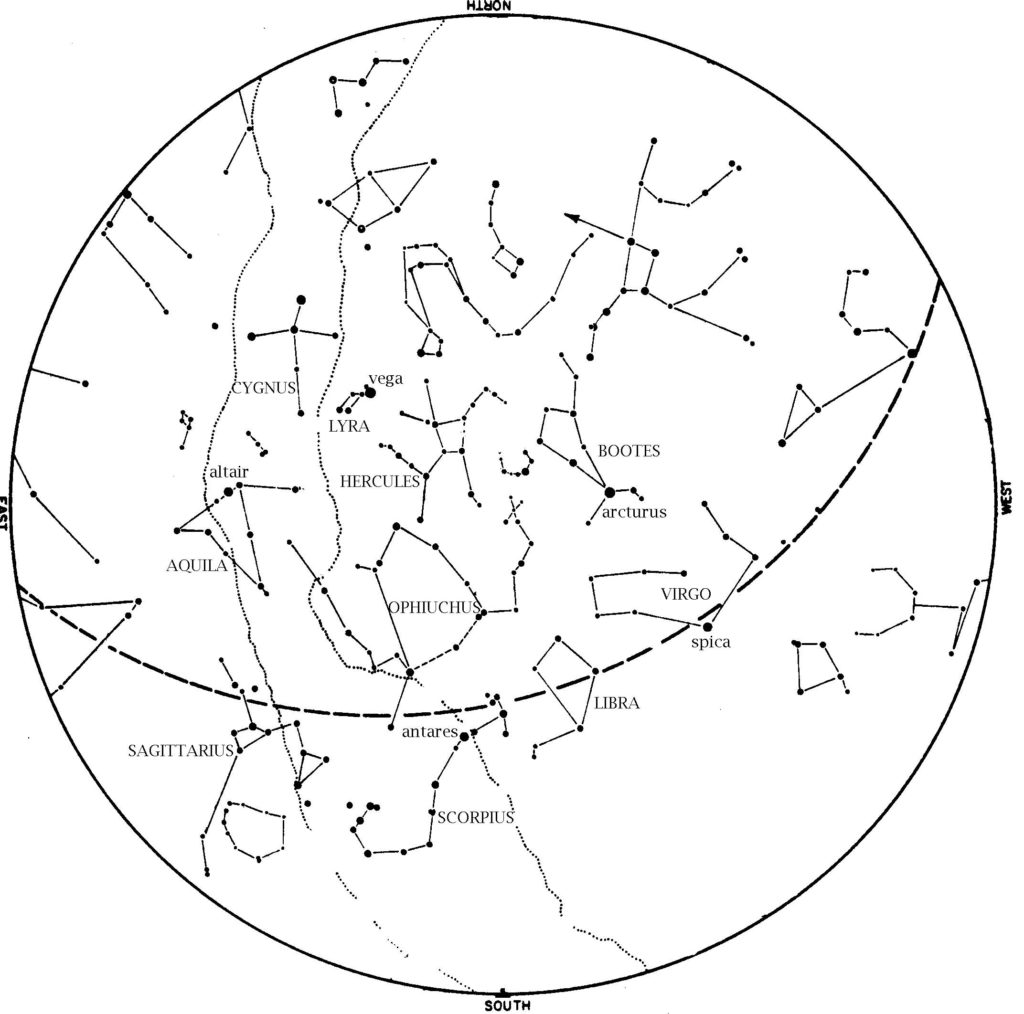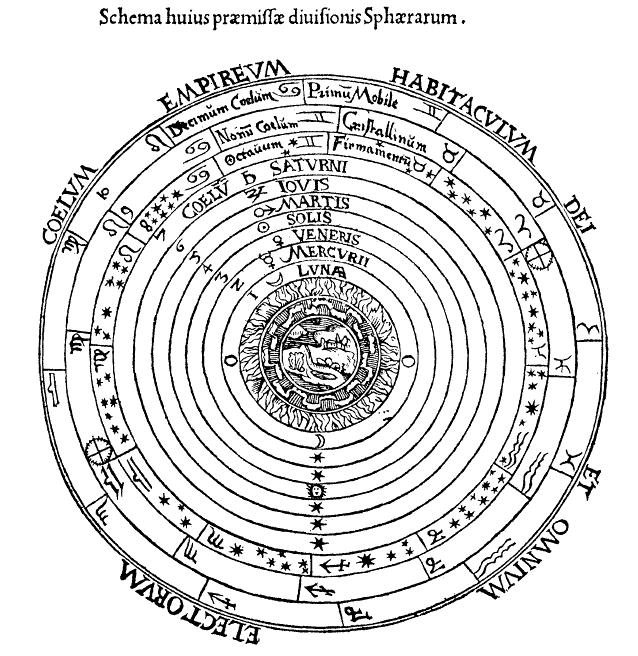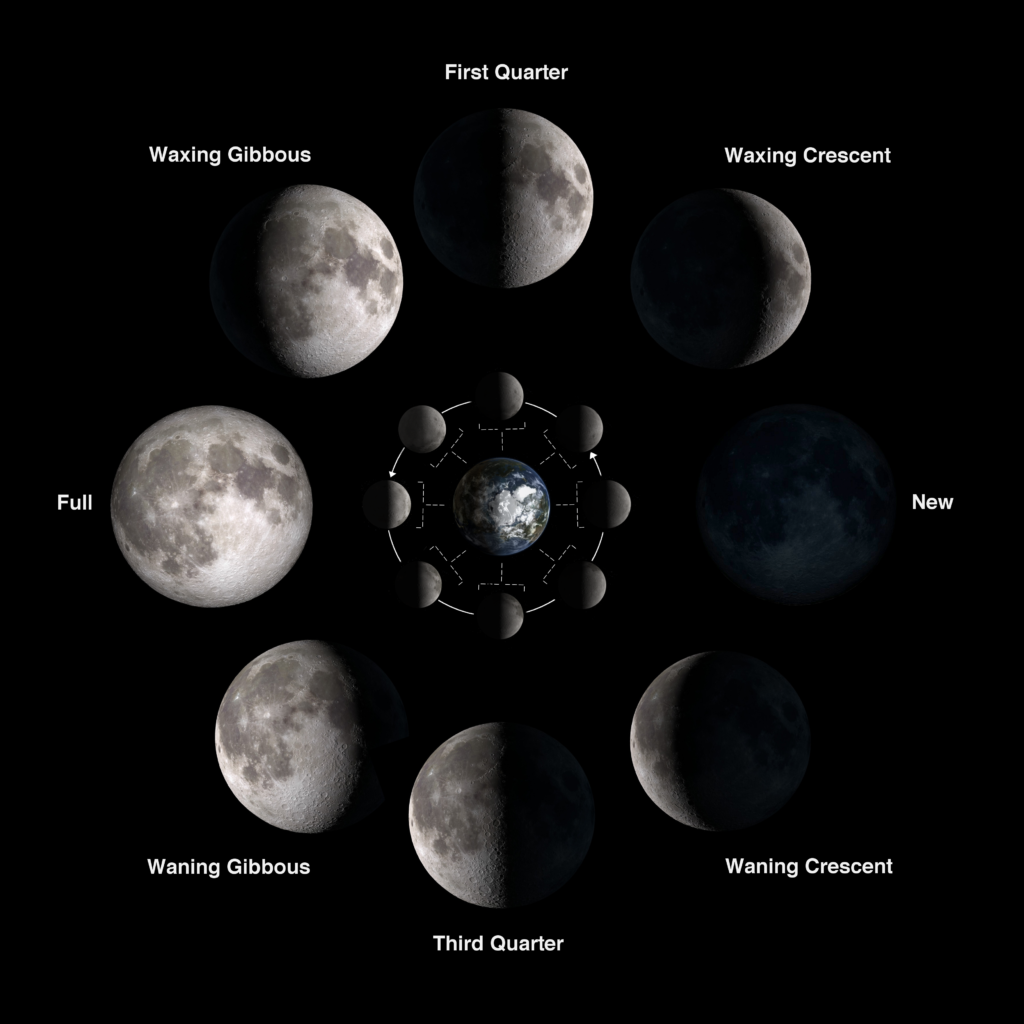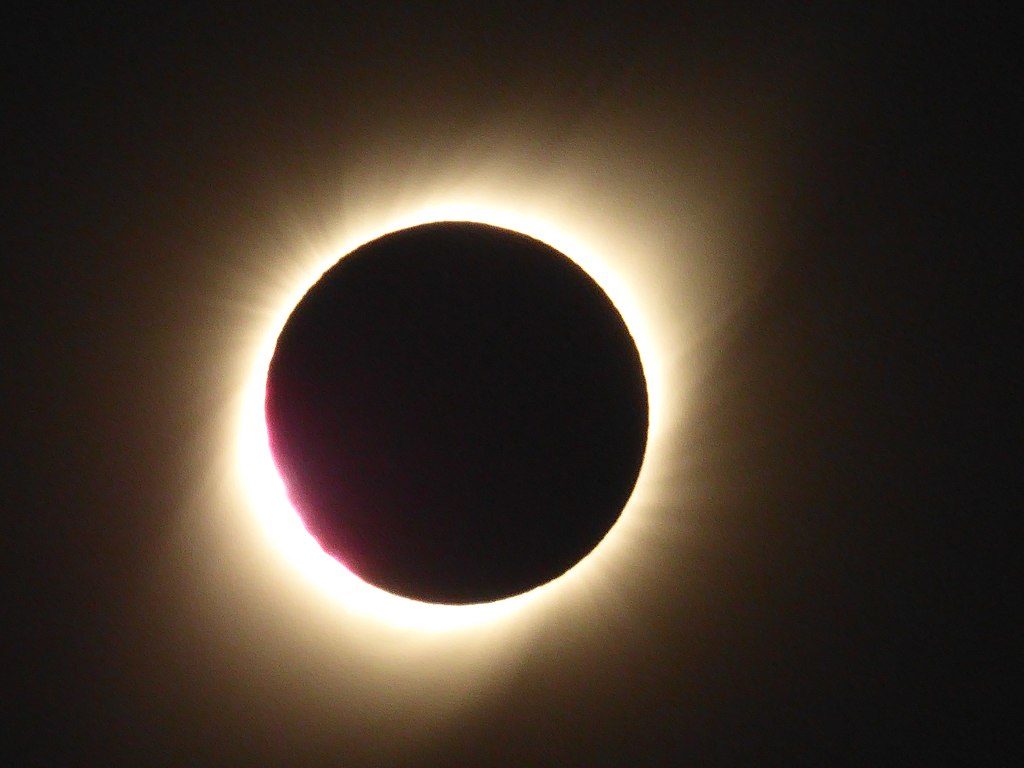
Jupiter remains in the evening sky, well placed for observing. Look low in the southwest at dusk for the brightest thing there.
Saturn is at opposition on July 9. This means that Earth is aligned between Saturn and the Sun on that date, putting Saturn opposite the Sun in our sky. For much of July, Saturn is up all night long. You can find it easily rising in the southeast at dusk or setting in the southwest at dawn.
Venus and Mars are lost in the Sun’s glare and out of sight this month.
At 5:10 pm CDT on Thursday, July 4, the Earth is at aphelion, which means it is as far away from the Sun as it will get this year. That greater distance is not doing much to cool us off, however. Why not? Bear in mind that Earth’s orbit is almost a perfect circle, with an eccentricity (out of roundness) of only 1.6%. The variation in the Earth-Sun distance is too small to affect our weather. Earth’s 23.44 degree tilt produces a much bigger effect. Our hemisphere is very much tilted towards the Sun in July, so we swelter in summer heat.

Printed rendition of a geocentric cosmological model from Cosmographia, Antwerp, 1539. Source: Wikipedia Commons.
The Big Dipper is above and to the left of the North Star, with its handle pointing up. From that handle, you can ‘arc to Arcturus’ and then ‘speed on to Spica’; those stars are in the west at dusk. Leo, the Lion, is also in the west at dusk.
Antares, brightest star of Scorpius, the Scorpion, is in the south. When you look at Spica and Antares, see if you notice the color difference between them. All stars seem white at first glance, but Spica is blue enough and Antares red enough for you to notice the colors by contrasting them. What your actually seeing is that Spica is almost 39,000 degrees (F) hotter than Antares! Of course Antares, at ‘only’ 6,750 degrees F is still quite hot. Jupiter is above Antares and to its left.
The ‘teapot’ of Sagittarius to the left of Scorpius, with Saturn to the upper left of the ‘teapot’. The Summer Triangle, so-called because its stars are up all night long this time of year, has fully risen in the east. The stars of summer are here.
Moon Phases 2019:

New July 2, 2:16 p.m. ; July 31, 10:12 pm
1st Quarter July 9, 5:55 a.m.
Full July 16, 4:38 p.m.
Last Quarter July 24, 8:18 p.m.
The New Moon of July 2 blocks the Sun, causing a total solar eclipse. However, the path of totality is over the South Pacific, ending in Chile and Argentina. That puts it too far from us for even a partial eclipse here.

Totality of the solar eclipse of July 2, 2019, captured from La Serena, Chile. Wikimedia Commons.
George Observatory is back open for business! Come join us any clear Saturday night. This month we have special events in honor of the 50th anniversary of the first Moon landing (July 20, 1969). Friday night, July 12, is a special Moon-gazing event from 7:30-10. All telescopes that night will aim at the waxing gibbous Moon! There will also be lectures about the Moon. The actual anniversary is Saturday, July 20. We will have a Family Space Day, with speakers, Moon-themed Discovery Dome shows, and other stellar activities from 1-11 pm. That night is a normal Saturday public observing night. (We can’t observe the Moon that night because it won’t rise until 10 pm.) Be aware that clouds may block the Moon from view on the 12th, but our speakers and other activities on both days go on rain or shine.
Clear Skies!





